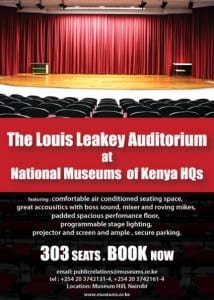Down Memory Lane with Saryoo Shah
Saryoo Shah is a 3rd generation Kenyan Indian born in 1947. She joined the Kenya Museum Society (KMS) in the 1980s, making her one of the longest members, and has served on the KMS Council since 2001.
Starting in 1991, Saryoo was a certified guide at the Nairobi National Museum with a strong knowledge of the Asian African Heritage gallery. An art lover, Saryoo has for many years helped organize the annual Affordable Art Show, one of the largest visual arts exhibitions in Kenya.
Saryoo loves to tell stories about life in the old days, the participation of the Asian community in Kenya’s independence struggle and how Kenyan Indians contributed to launching some of the galleries at the Nairobi Museum, “even though Asians were not allowed into the Museum.” A mother and grandmother, Saryoo is an excellent cook and an avid book reader.
***
What do you enjoy about being a KMS member?
Being part of the Museum you get to learn so much about natural history through the different departments in the Museum. For example, palaeontology, birds, mammals and insects. Now I love bird watching and I have been teaching my young grandchildren. When he was 3 years old, my grandson could name almost 50 different birds.
Tell us about your time as chairperson of KMS in 2006?
It happened quite suddenly. The chairperson at the time, Rhodia Mann, had to step down quite abruptly after only a few months and handed the role to me. I was not prepared to be the chairperson but I did the best that I could. It was not an easy position. I was the only Asian on a committee of white people, and being a woman as well, it was tough.
During my position as chair, I managed to persuade the then director general, Dr Idle Farrah, to preserve a rare Coelacanth fish, the only coelacanth ever to be caught on the coast of Kenya. It was lying in formalin for 3 to 4 years after having been caught in Malindi by the fishermen in 2001. KMS funded 50% and the National Museums of Kenya funded 50% of the cost of preserving the fossil fish.
What other experiences have you enjoyed as a KMS member?
I enjoyed being a museum guide because we learned a lot about the museum galleries. We had to go through guide training for six weeks, then pass a test before we were awarded certificates as qualified museum guides. Palaeontology was compulsory course and we had to train in one gallery of our choice and one gallery chosen by the examiner.
I was also actively involved with the Know Kenya Course in the 1990s. The workshop took place over 5 weeks and we were educated about different aspects of Kenya’s prehistory, ethnography, geography and natural history.
You organize children’s activities at the Nairobi Museum, tell us about them?
We have held Origami sessions which is the Japanese craft of folding paper into different shapes. Origami was quite popular with the children. We have worked with clay, done fossil-making with plaster of Paris and I have also taken children behind the scenes to a few departments in the Nairobi Museum.
The most memorable children’s event was organizing an Indian culture morning with the help of another guide, Liz Lampard. The children dressed in Indian clothes, participated in folk dancing, applied henna dye on their hands, did forehead decorations like the Indian brides and were served with bhajias and a slice of pizza. One mother celebrated his son’s birthday by bringing his friends to the event.
Why should people visit the national museums and join KMS?
People should visit to increase their knowledge about Kenya and its wealth regarding birds, mammals, insects, ethnography and much more. By joining the KMS, members are privileged to access many departments and back-of-house sections that are not open to the general public.
What books are you reading at the moment?
I am reading Horrible Geography by Anita Ganeri and Mike Phillips. It’s meant for kids but I ended up reading it as it was so informative and I could connect easily with my grandson.


